Roof Fall Protection Systems
Keep your employees and contractors safe on the job with roof safety solutions
OSHA general industry regulations require fall protection for workers performing tasks at heights of four feet or more – and this includes your roof. Falls are the leading cause of occupational injuries and fatalities each year, and the financial losses associated with a single incident far exceed the investment in rooftop fall protection.
Every rooftop work environment presents different fall safety challenges. By partnering with a fall protection company familiar with the unique nature of rooftop fall hazards, you can achieve cost effective solutions that ensure worker safety and OSHA/ANSI compliance without compromising productivity.
Explore our roof safety solutions below or contact the experienced team at Diversified Fall Protection to configure your system today.
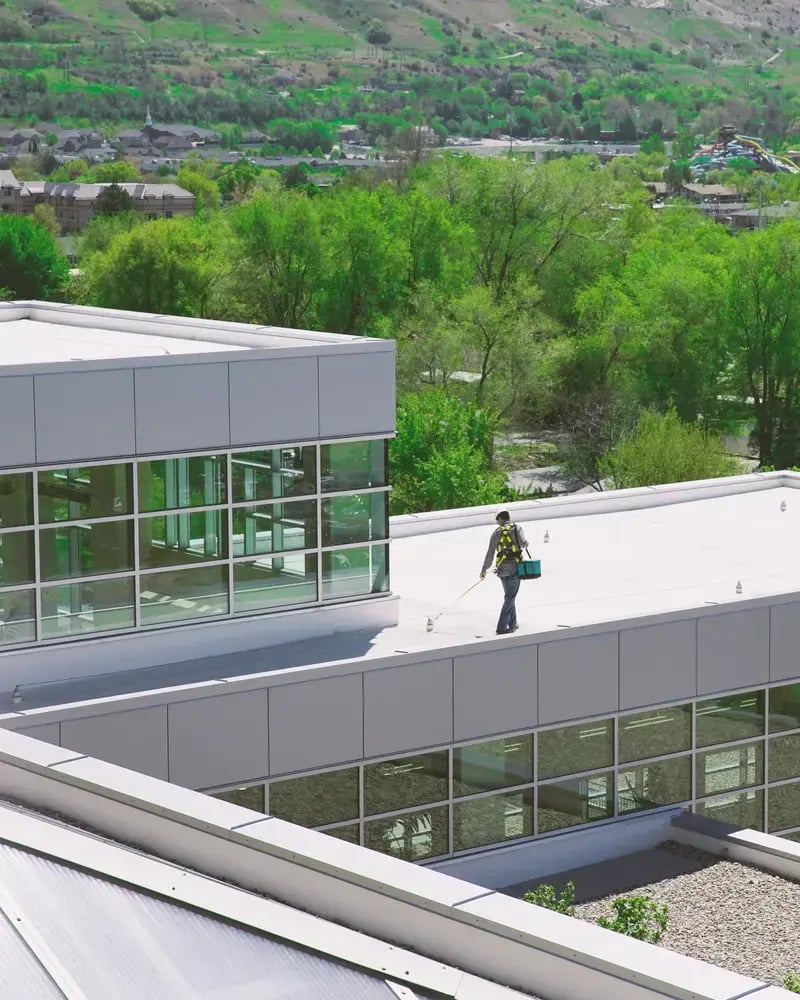
Roof Fall Protection Systems
We offer a wide range of rooftop safety solutions, from non-penetrating, weighted base guardrails and skylight guards to engineered horizontal lifelines and single-point anchors. Ensure OSHA compliance and safe roof access with a fall protection system from the safety specialists at DFP.
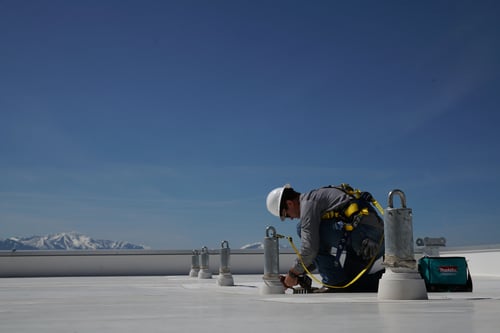
Roof Single Point Anchors
Permanent and portable single-point anchors to meet your rooftop fall protection needs.

Roof Guardrail
Simplify with a passive fall protection system that doesn't require employee training after installation for roof and cooling center edges.

Roof Guardrail Safety Swing Gate
Protect the openings on your guardrail system with self-closing safety swing gates.
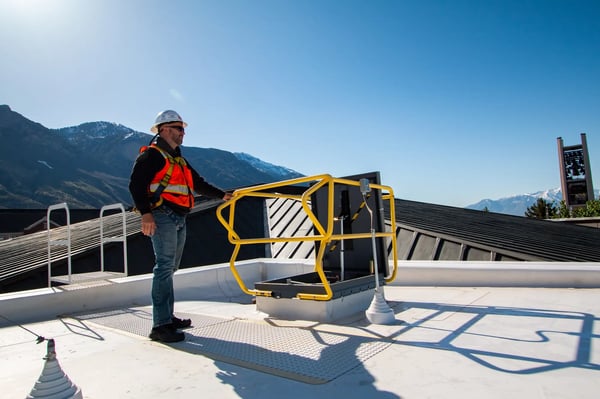
Roof Hatch Guardrail
Our simple roof hatch-mounted guardrail system with a self-swing gate. Automatic Roof Hatch Opener options available.
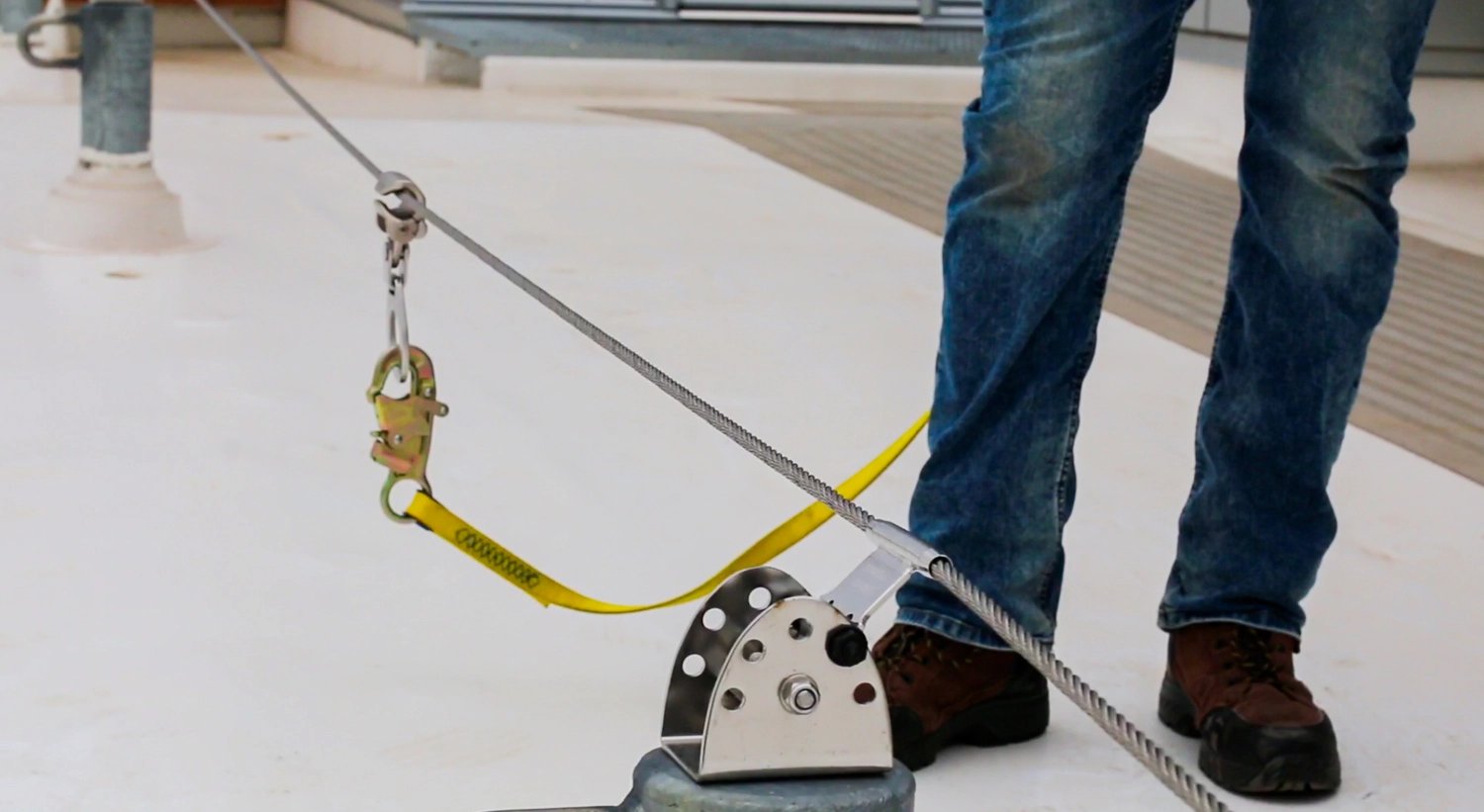
Rooftop Horizontal Lifelines
When guardrail is not an option, horizontal lifelines do an excellent job of keeping the worker from the hazard on rooftops.

Rooftop Walkways & Crossovers
Guide the way to employee safety and protect your roof from excessive foot traffic.
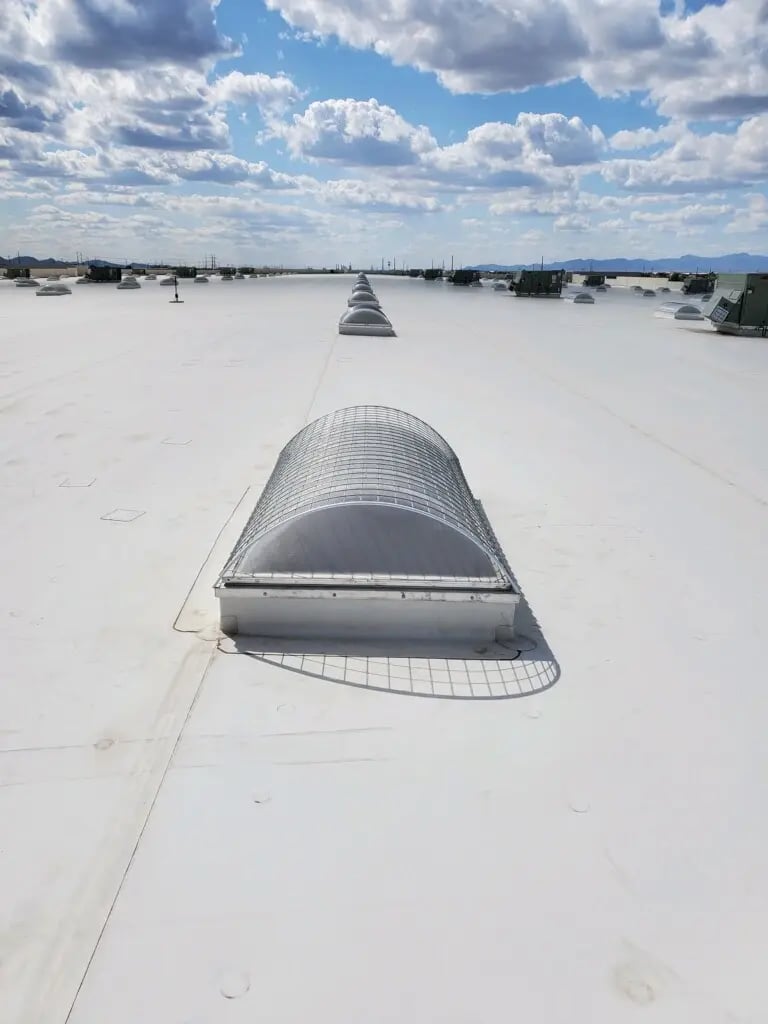
Roof Skylight Screens
Let light into your facility while keeping employees and contractors protected.
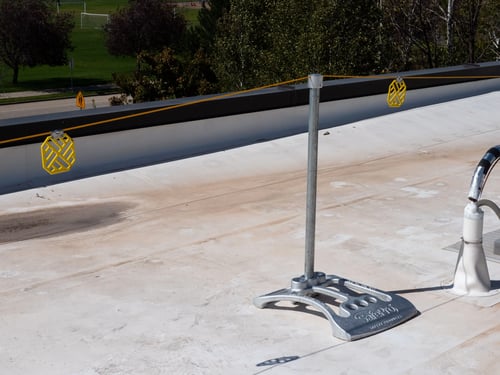
Roof Warning Lines
Define designated work areas to protect personnel from hazards and dangerous areas.
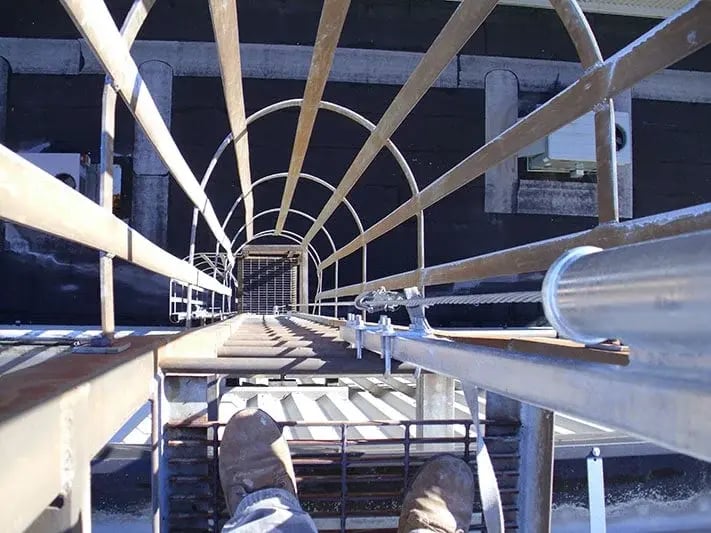
Vertical Lifelines for Roof Access
Safeguard employees utilizing fixed ladders to access rooftops with vertical lifelines.
See Our Roof Fall Protection Solutions



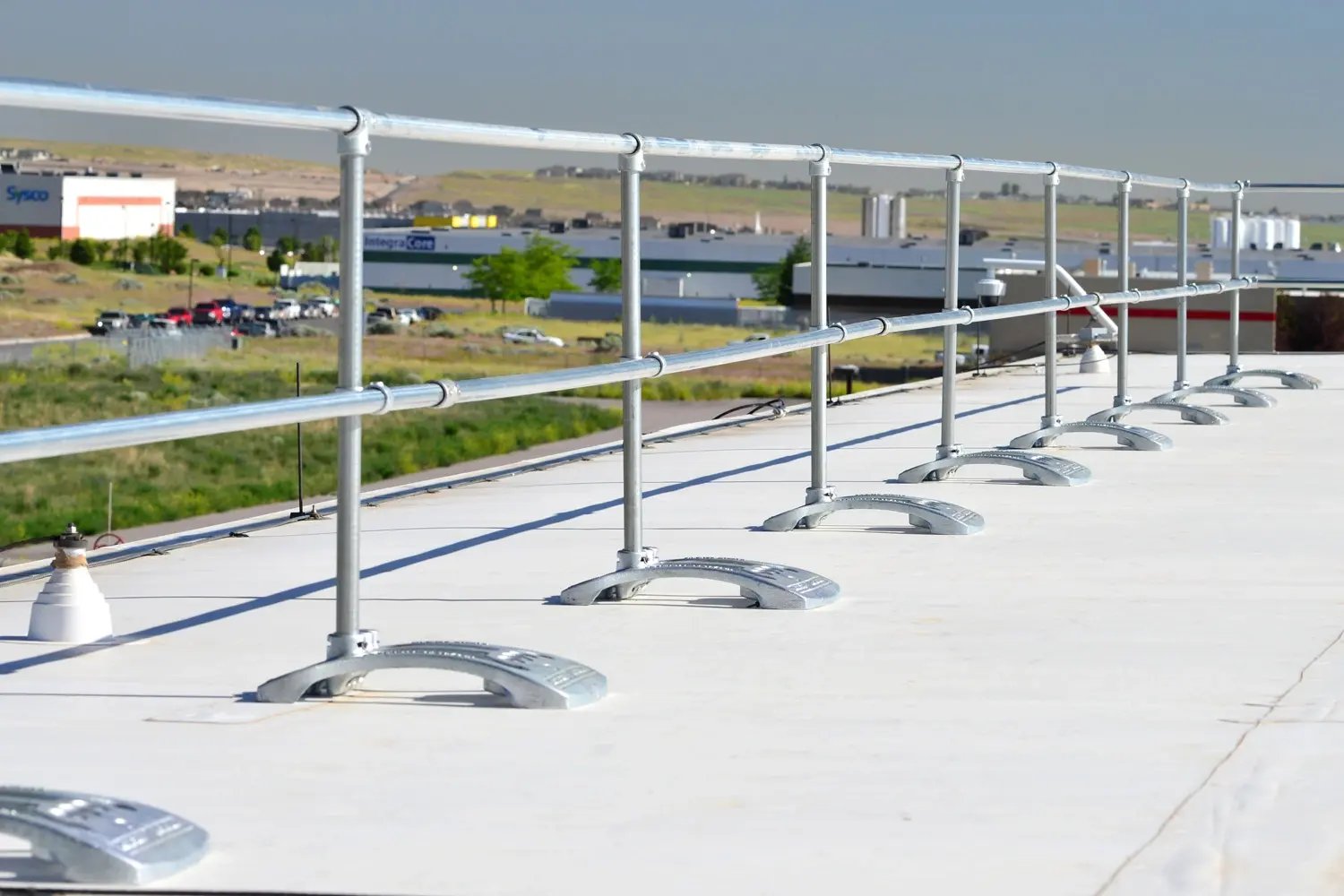

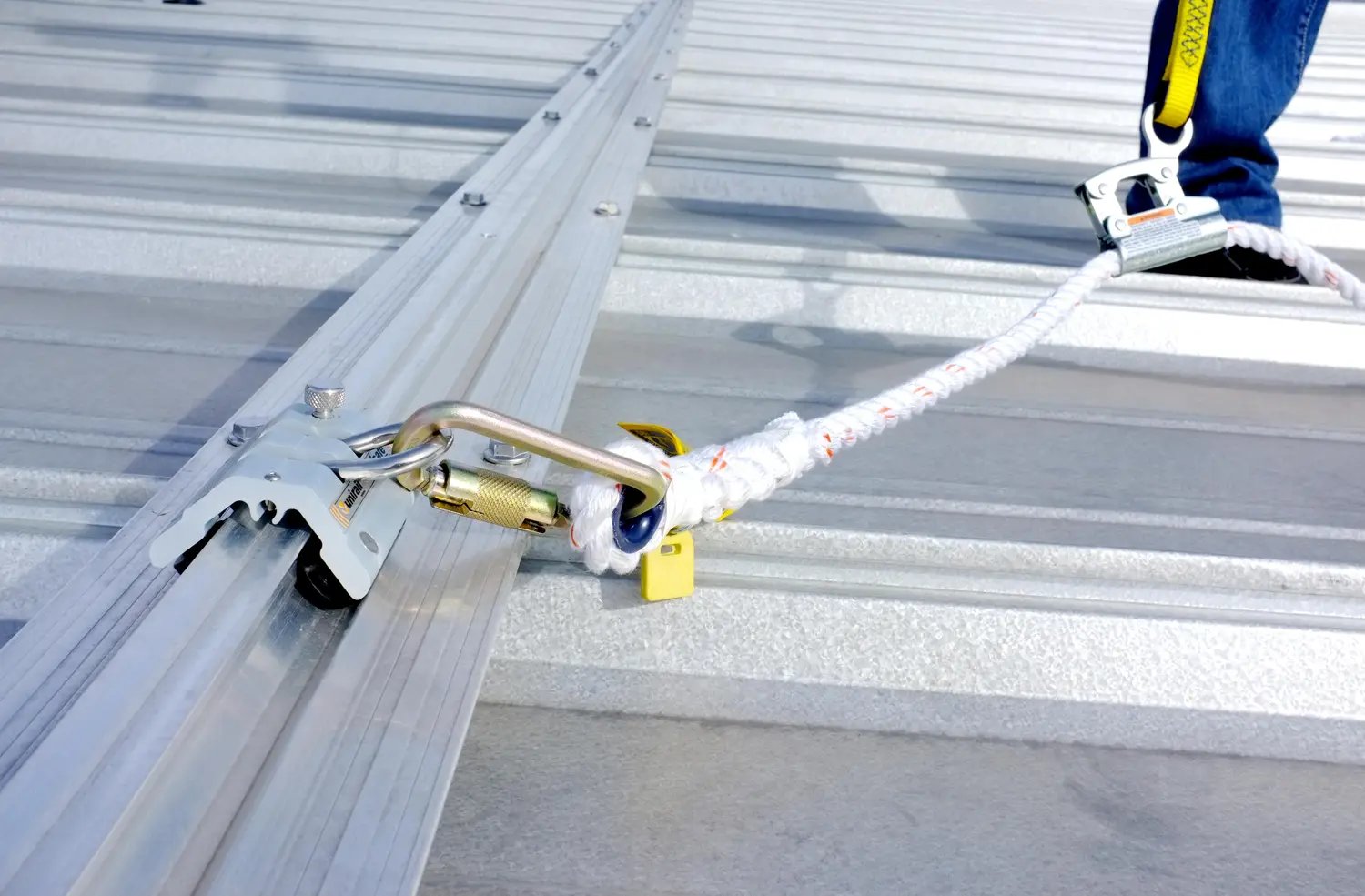

Frequently Asked Questions
For general industry, OSHA 1910.28(b)(13) requires fall protection when workers are within 15 feet of an unprotected roof edge. Acceptable solutions include guardrails, safety nets, or personal fall arrest systems (PFAS). If work is deemed "infrequent and temporary," a designated area may be permitted in limited zones.
Best practice goes beyond compliance — fall protection should be engineered to suit the roof’s layout, access frequency, and job task, prioritizing risk elimination through passive or active systems.
Restraint: Fall restraint systems prevent the worker from reaching a fall hazard.
Arrest: Fall arrest systems stop a fall in progress.
System selection depends on roof geometry, work frequency, and user mobility requirements. Ideally, passive fall protection, such as guardrail, is put in place as it requires no change in the work environment or the worker.
However, when guardrail is not feasible, restraint systems are prioritized, while arrest systems are deployed where full edge access is necessary.
Yes. Roof openings such as hatches, skylights, and ladder access points are considered holes in the roof and fall hazards. Fall protection options include guardrails, self-closing gates, or active systems like lifelines and anchors.
All roof access areas should be evaluated and protected with systems that do not compromise egress or structural performance.
Yes. Non-penetrating and adhesive-based anchor systems are widely available and can be used on roof types like TPO, EPDM, PVC, or standing seam metal.
These systems are engineered to meet or exceed 5,000 lb load requirements under OSHA and ANSI Z359 standards without damaging roof membranes, preserving waterproofing while providing compliant fall arrest capability.
"Infrequent" means occasional tasks, such as seasonal maintenance or inspections. "Temporary" refers to short-duration tasks, typically under 2 hours.
Even for these scenarios, best practice is to provide permanent or portable fall protection if the work area is near an edge or unprotected opening. Especially if it is expected that the maintenance or work will occur again. Risk increases with repeat access, even if each visit is short.
It depends on:
- Access frequency
- Traffic volume
- Roof design and hazards
Guardrails offer passive, always-on protection and are ideal for routine access areas. Horizontal lifelines allow flexibility for mobile workers and complex layouts. Many facilities use a combination of both for optimized safety coverage.
A PFAS typically includes:
Anchorage: Fixed or portable, rated to withstand at least 5,000 lbs per person
Body support: Full-body harness with appropriate D-ring placement
Connecting device: Lanyard or self-retracting device (SRD)
Rescue plan: Predefined method for prompt retrieval to prevent suspension trauma to the fallen worker (Calling 911 should be part of the plan, but not the entire plan)
All components must be compatible and regularly inspected, with training provided for every user.
Yes — if they are rated and applied correctly. Mobile anchors must be rated for 5,000 lbs minimum per user and compatible with the roof surface. Proper use includes ensuring enough fall clearance, substrate support, and tie-off angle control.
They are ideal for temporary work zones or when permanent anchorage isn't feasible.
Counterweight requirements vary by system height, wind loading, and spacing. A typical freestanding guardrail on a flat roof may require several hundred pounds per base to meet OSHA 1910.29 force requirements.
Diversified's non-penetrating guardrail bases use proprietary geometry to achieve maximum safety with only a 57 lbs base that can alternate directions for stability.
Always use engineered system specifications and perform load testing or analysis as part of the design phase to ensure compliance and stability.
OSHA 1926.503 requires that all workers exposed to fall hazards receive training that covers:
- System setup and use
- Equipment inspection and compatibility
- Recognizing fall risks
- Rescue and emergency response
Refresher training is recommended annually, or whenever systems change or usage issues are observed. Practical, hands-on instruction tailored to specific rooftop configurations provides the highest safety value.
It should be noted that passive fall protection systems, such as guardrail, do not require further training after installation.

b-1.jpg?width=1368&height=1340&name=Rail%20(175)b-1.jpg)

